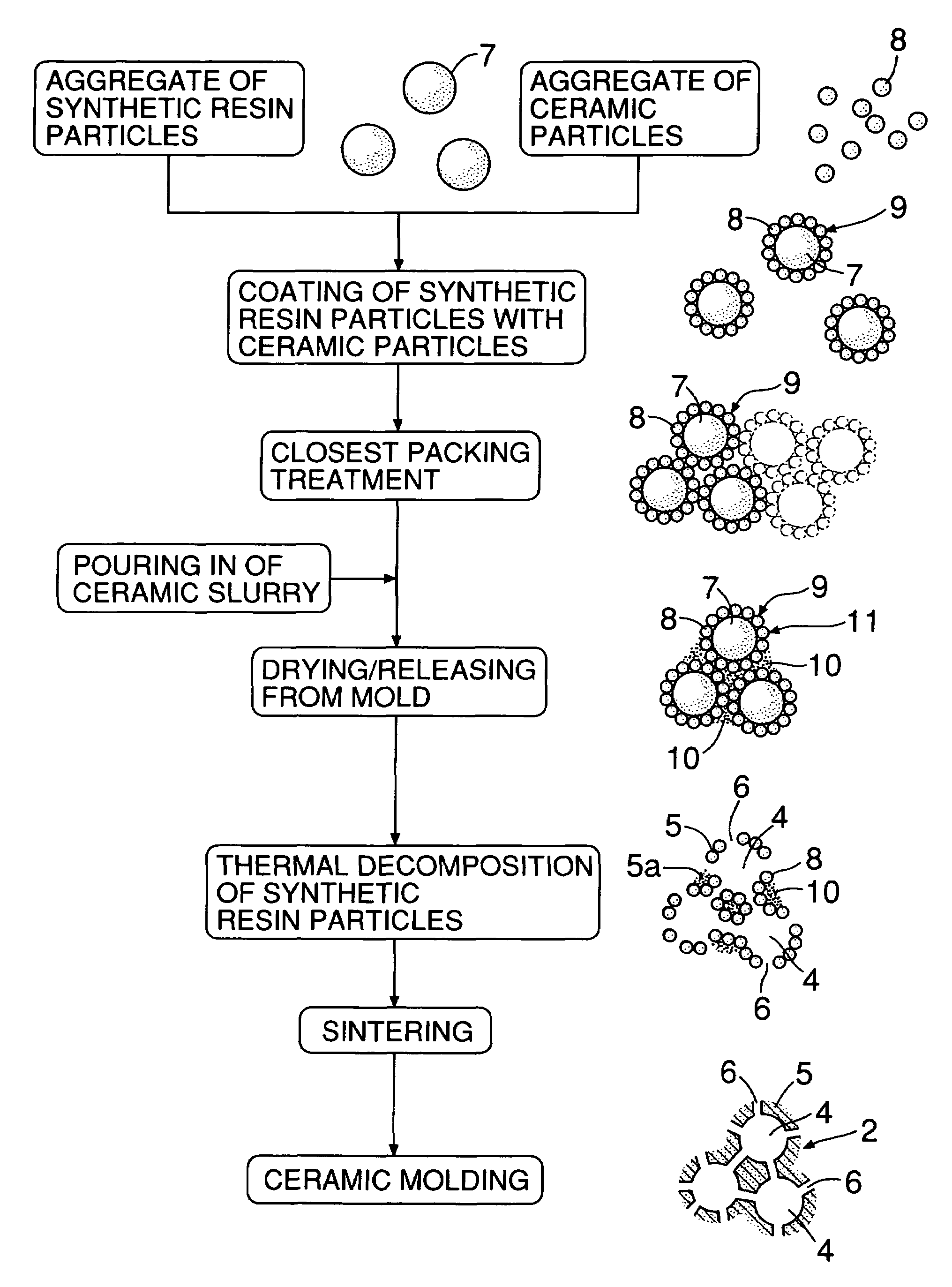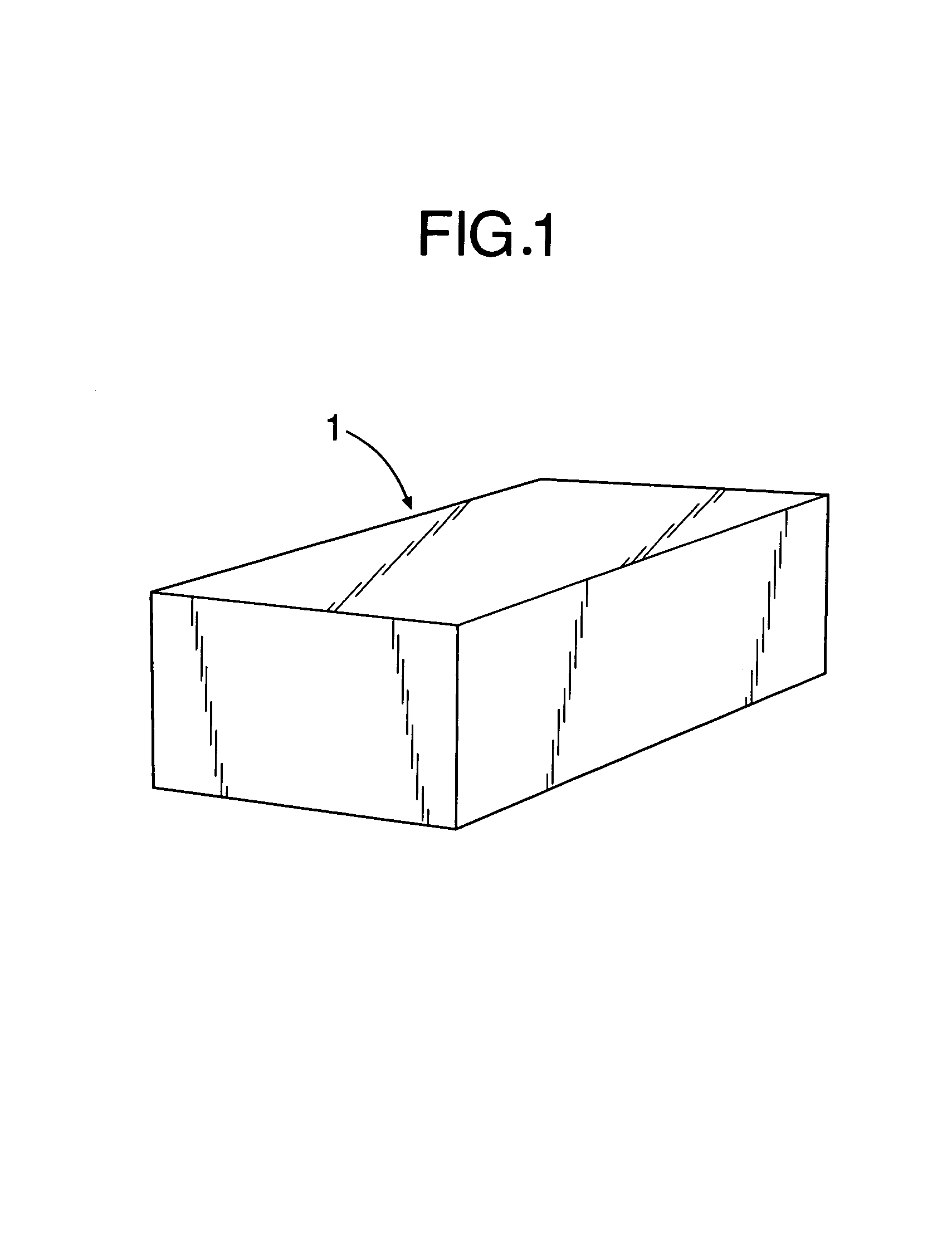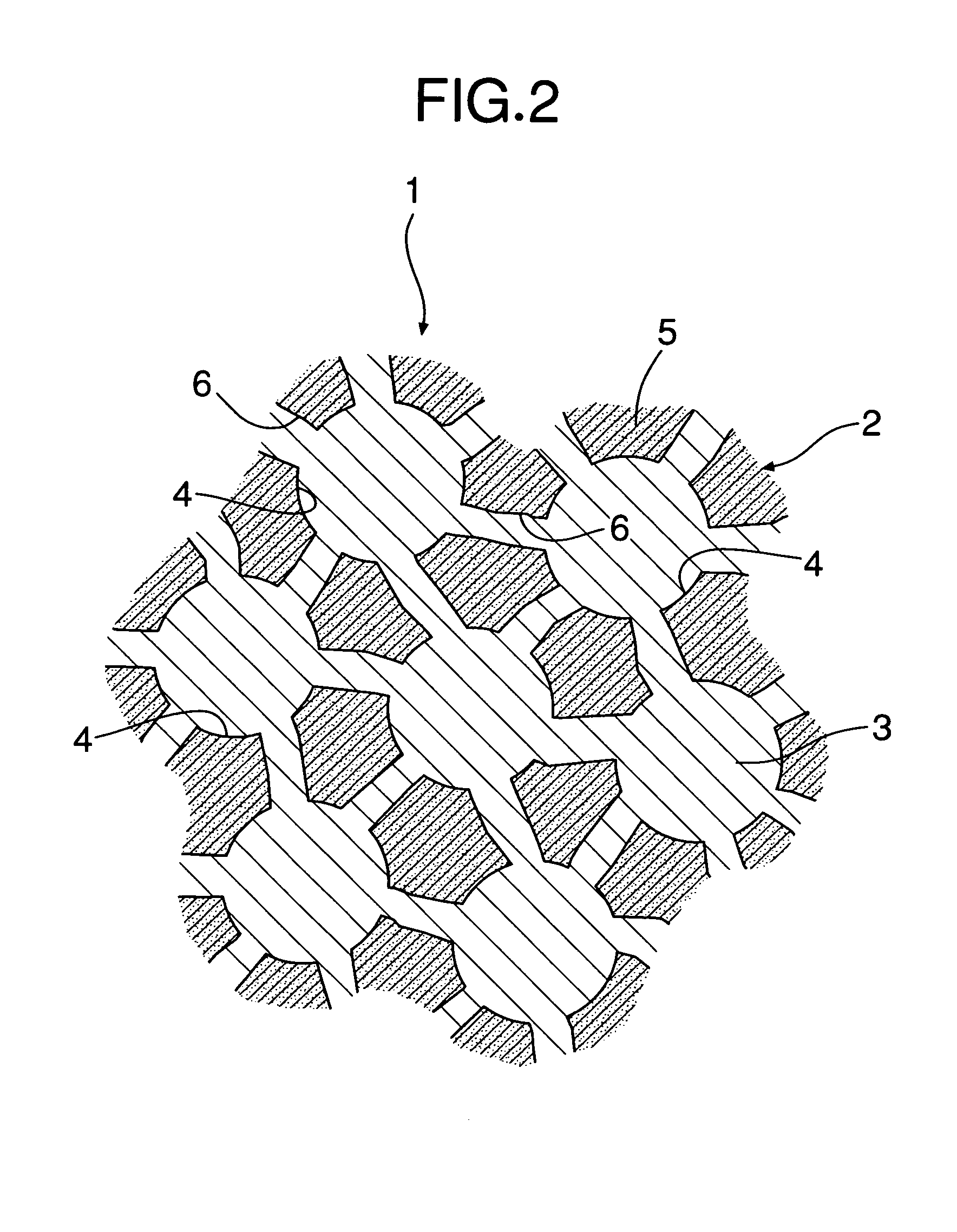Process for producing ceramic molding having three-dimensional network structure
a technology of network structure and ceramic molding, which is applied in the field of process for producing ceramic molding having a three-dimensional network structure, can solve the problems of large differences in mechanical properties, and achieve the effect of improving uniformity in cell size and cell distribution
- Summary
- Abstract
- Description
- Claims
- Application Information
AI Technical Summary
Benefits of technology
Problems solved by technology
Method used
Image
Examples
embodiment 1
[0030]The steps (a) to (g) were carried out under the conditions below, to obtain a rectangular parallelepiped ceramic molding having a height of 20 mm, a width of 30 mm, and a length of 40 mm.
[0031]Step (a) . . . Aggregate of spherical synthetic resin particles: an aggregate of PMMA particles having a median diameter DM of 90 μm (product name MR-90G, manufactured by Soken Kagaku K.K.); aggregate of ceramic particles: an aggregate of SiC particles having a median diameter dM of 0.5 μm (product name OY-20, manufactured by Yakushima Denko Co., Ltd.).
[0032]Step (b) . . . Mixing ratio by weight between an aggregate of synthetic resin particles (W1) and an aggregate of ceramic particles (W2): W1 / W2=1 / 1; coating processor: product name AM-15F, manufactured by Hosokawa Micron Corporation, rotational speed RS 1000 rpm, treatment time t 0.5 h, inner piece distance 1 mm.
[0033]Step (c): Dimensions and structure of mold: two PTFE blocks having a 20 mm high, 30 mm wide, and 20 mm deep indentatio...
embodiment 2
[0039]The steps (a) to (g) were carried out under the conditions below, to obtain a rectangular parallelepiped ceramic molding having a height of 20 mm, a width of 30 mm, and a length of 40 mm.
[0040]Step (a) . . . Aggregate of spherical synthetic resin particles: an aggregate of PMMA particles having a median diameter DM of 10 μm (product name MX-1000, manufactured by Soken Kagaku K.K.); aggregate of ceramic particles: an aggregate of SiO2 particles having a median diameter dM of 0.01 μm (product name S-5280, manufactured by SIGMA), and an aggregate of Al2O3 particles having a median diameter dM of 0.28 μm (product name Taimicron TM-D, manufactured by Taimei Chemicals Co., Ltd.), SiO2 / Al2O3 mixing ratio by weight between the aggregate of SiO2 particles and the aggregate of Al2O3 particles=1 / 20.
[0041]Step (b) . . . Mixing ratio by weight between an aggregate of synthetic resin particles (W1) and an aggregate of ceramic particles (W2): W1 / W2=1 / 1; coating processor: product name AM-15F...
PUM
| Property | Measurement | Unit |
|---|---|---|
| median diameter dM | aaaaa | aaaaa |
| median diameter dM | aaaaa | aaaaa |
| viscosity | aaaaa | aaaaa |
Abstract
Description
Claims
Application Information
 Login to View More
Login to View More - R&D
- Intellectual Property
- Life Sciences
- Materials
- Tech Scout
- Unparalleled Data Quality
- Higher Quality Content
- 60% Fewer Hallucinations
Browse by: Latest US Patents, China's latest patents, Technical Efficacy Thesaurus, Application Domain, Technology Topic, Popular Technical Reports.
© 2025 PatSnap. All rights reserved.Legal|Privacy policy|Modern Slavery Act Transparency Statement|Sitemap|About US| Contact US: help@patsnap.com



